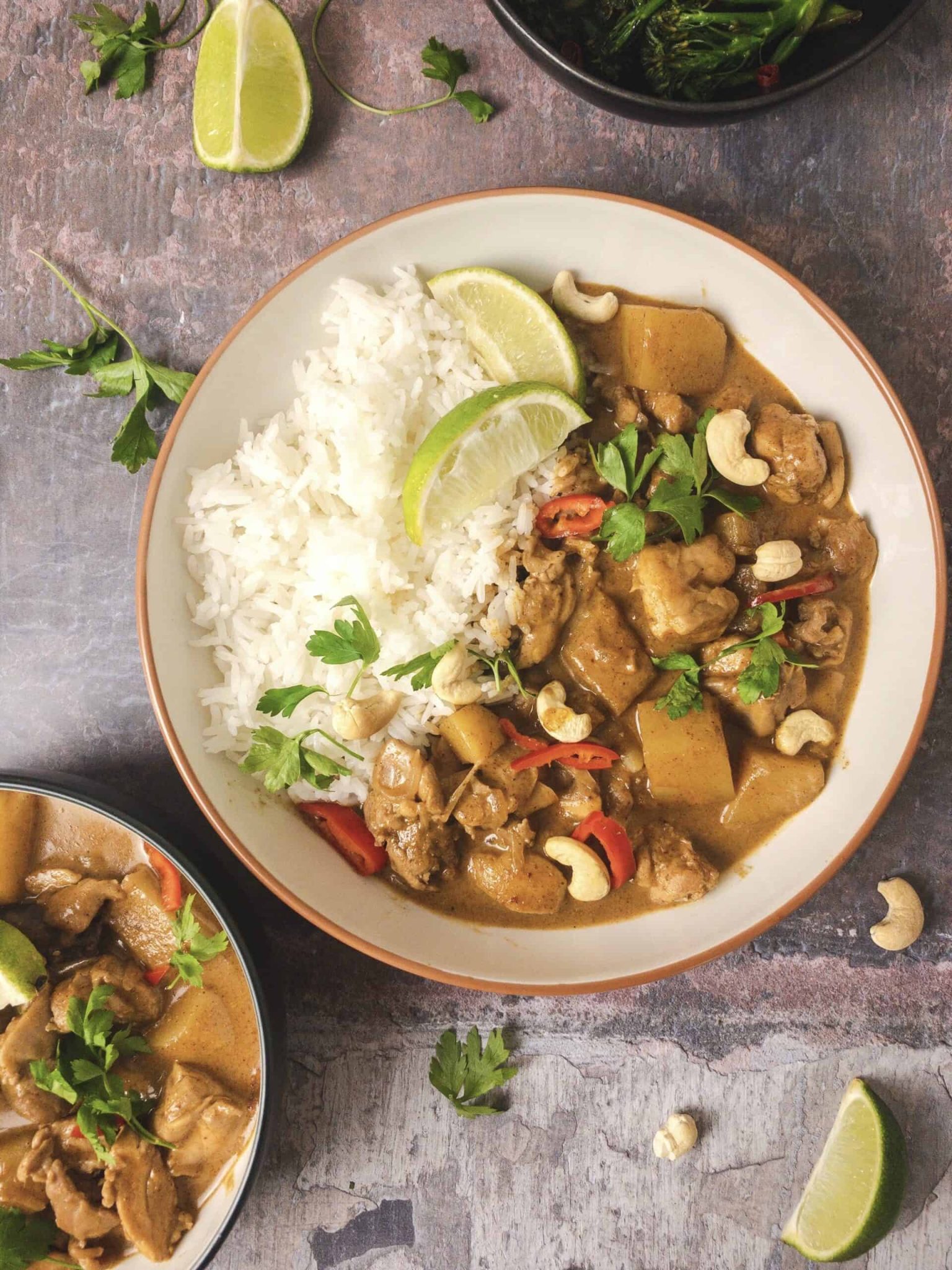Massaman curry holds a special place in Thai cuisine. It’s rich, nutty, and mellow—not the fiery, sweat-inducing curry many expect when they think of Thailand. Instead, it’s a dish with a story to tell, one bowl at a time.
Origins Rooted in Diversity
Massaman curry’s history starts in the cosmopolitan court of Ayutthaya, Central Thailand, during the 17th century. This was a time when traders and diplomats from across Asia and the Middle East mingled with local Thais. The name “massaman” itself is thought to come from “mosalman,” an old Persian word for Muslim. Its roots trace to Persian merchants, especially a figure named Sheik Ahmad Qomi, who played a key role in bringing new flavors and influences to the Thai royal court. It was in this melting pot of cultures—Malay, Persian, Indian, and Thai—that the first versions of massaman emerged, blending local and imported ingredients in ways that were entirely new for the time (Wikipedia; National Geographic).
A Curry Like No Other
Unlike most Thai curries, massaman isn’t about heat. Instead, it’s about complexity and depth. The flavor is mellow, with warm spices like cinnamon, cardamom, and nutmeg—ingredients you’d sooner expect in an Indian or Middle Eastern dish than a Thai one. Coconut milk gives it a creamy richness, while tamarind adds gentle tang. The real signature, though, is the peanuts: they give massaman its unmistakable creamy, nutty body and a subtle sweetness that rounds everything out (National Geographic).
Potatoes are another surprise. They absorb the curry’s flavors and help give the dish a comforting, stew-like consistency. Onion, chicken, and sometimes beef or lamb round out the main cast. The curry paste itself is a blend of dried spices—coriander, cumin, cloves—mixed with local aromatics like lemongrass, galangal, and shrimp paste. Once simmered together with coconut milk, the result is a sauce that’s both lush and layered.
Cooking and Serving Traditions
Traditionally, the curry paste is fried with coconut cream, which helps release the spices’ aroma. Then in go the meat, potatoes, onions, and peanuts, along with fish sauce, tamarind, and sugar. Everything simmers until the flavors meld and the meat is tender. It’s usually served with steamed rice, and in some regions, you’ll find it paired with roti or flatbread—a nod to its Muslim heritage (Wikipedia).
The Journey Through Time
Massaman curry’s story is one of adaptation. It started as a dish for the royal court but spread throughout Thailand, especially in the south where Muslim communities were strongest. Over time, it became a staple comfort food, eaten at family tables and in street food stalls alike. Despite its foreign beginnings, it’s now seen as a Thai classic—so much so that it’s been named one of the world’s best dishes in several international polls (National Geographic).
Why It Matters
Massaman curry is living proof that food isn’t just about taste. It’s about history, trade, and cultural exchange. The dish wouldn’t exist without centuries of migration and mixing. It’s Thai, but it’s also a little bit Persian, a little bit Malay, and a little bit Indian. Every bite is a reminder that the best flavors often come from sharing.
Today, massaman curry keeps evolving. Chefs experiment with new proteins, swap in sweet potatoes or cashews, and tweak the recipe to suit modern tastes. But the basics remain: potatoes, peanuts, rich coconut, and that unmistakable, mellow spice. It’s a dish that’s as much about the journey as the destination—and that’s why it still matters, centuries later.
How to Make Massaman Curry at Home
Ready to try this classic at home? Here’s a simple and flavorful Massaman curry recipe, adapted from Chyuen’s kitchen. For the full recipe details and tips, check out the original post by Chyuen at Chyuens.com.
Ingredients
- 500g chicken thigh or beef, cut into chunks
- 2 tablespoons Massaman curry paste
- 400ml coconut milk
- 2 potatoes, peeled and cut into chunks
- 1 large onion, sliced
- 1/3 cup roasted peanuts
- 1–2 tablespoons fish sauce (to taste)
- 1 tablespoon tamarind paste
- 1 tablespoon palm sugar or brown sugar
- 2 tablespoons vegetable oil
Instructions
- Fry the Curry Paste: Heat oil in a saucepan over medium heat. Add the Massaman curry paste and half the coconut milk. Cook until fragrant and the oil starts to separate.
- Add the Meat: Add the chicken or beef and cook until it’s browned on all sides.
- Simmer: Pour in the remaining coconut milk along with potatoes, onion, and peanuts. Stir well.
- Season: Add fish sauce, tamarind paste, and sugar. Adjust the flavor to your liking—aim for a balance of salty, tangy, and sweet.
- Cook Gently: Lower the heat and let the curry simmer until the meat is tender and the potatoes are cooked through (about 20–30 minutes).
- Serve: Enjoy your Massaman curry hot with steamed rice!
This recipe is a tribute to the dish’s rich heritage—warm, comforting, and full of flavor. Special thanks to Chyuen for sharing a version that’s so easy to make at home. For more details and tips, don’t miss the full recipe here.









